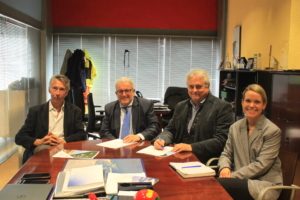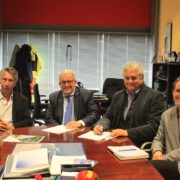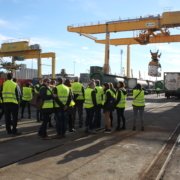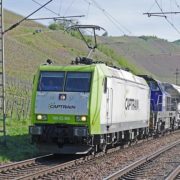The Escola and In-Move collaborate to promote railways
On the 13th of this month, the Escola Europea – Intermodal Transport, a European reference centre for training in logistics and intermodal transport, and Railgrup’s In-Move have signed a collaboration agreement in Barcelona to promote ther use of railway in the intermodal transport chain.
With this agreement, both entities have committed to raise awareness among transport users and logistic operators to adhere to the European Union’s committment to increase the visibility and practicality of rail transport within the Economic area.

Both In-Move multimodal logistics cluster initiative and the Escola Europea have agreed to offer courses in Spain, which will be aimed at professionals responsible for managing logistics chains in which intermodal transport can be a profitable alternative in terms of service, cost or time. Through this agreement, both companies will form a comprehensive training proposal in intermodal maritime-rail freight transport.
The courses will provide participants with the knowledge and tools to analyse the different elements that are necessary to contract a traint in a transport operation, and understand all of the associated costs, as well as to learn about the infrastructures and intermodal equipment that enable rail transport to be used as part of the multimodal transport chain.
The experiential learning methodology provides a practical point of view, combining theoretical classes and practical visits to transport facilities, introducing the concept of ‘co-modality’ as a tool for improving transport management. In this experience, participants will have access to the railway-port infrastructures, where they will see the logistics and transport operations, their management and their development first-hand, allowing students to experience these operations in person.
Thanks to the agreement between In-Move and the Escola Europea, professionals seeking to specialise in the design of intermodal transport logistics chains will be able to access a unique training offer, designed by both entities and their collaborators – expert professionals with extensive experience in the rail and maritime freight sectors.
With this commitment, the Escola Europea – Intermodal Transporte strengthens the current offer of its courses and training in rail freight transport which comprise of SURCO Operations I and SURCO Operations II.




